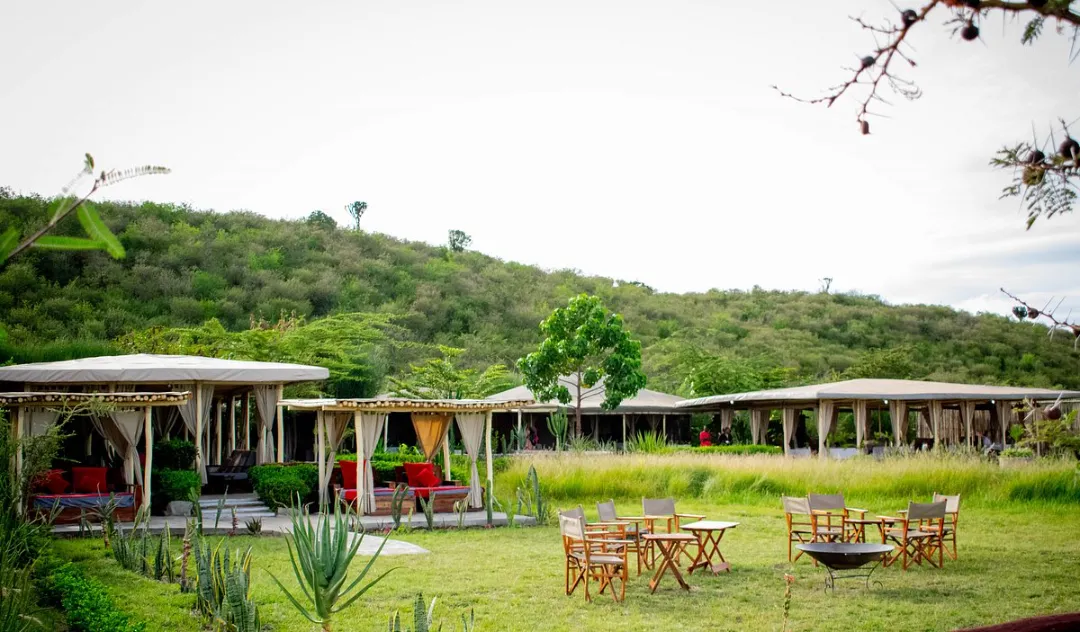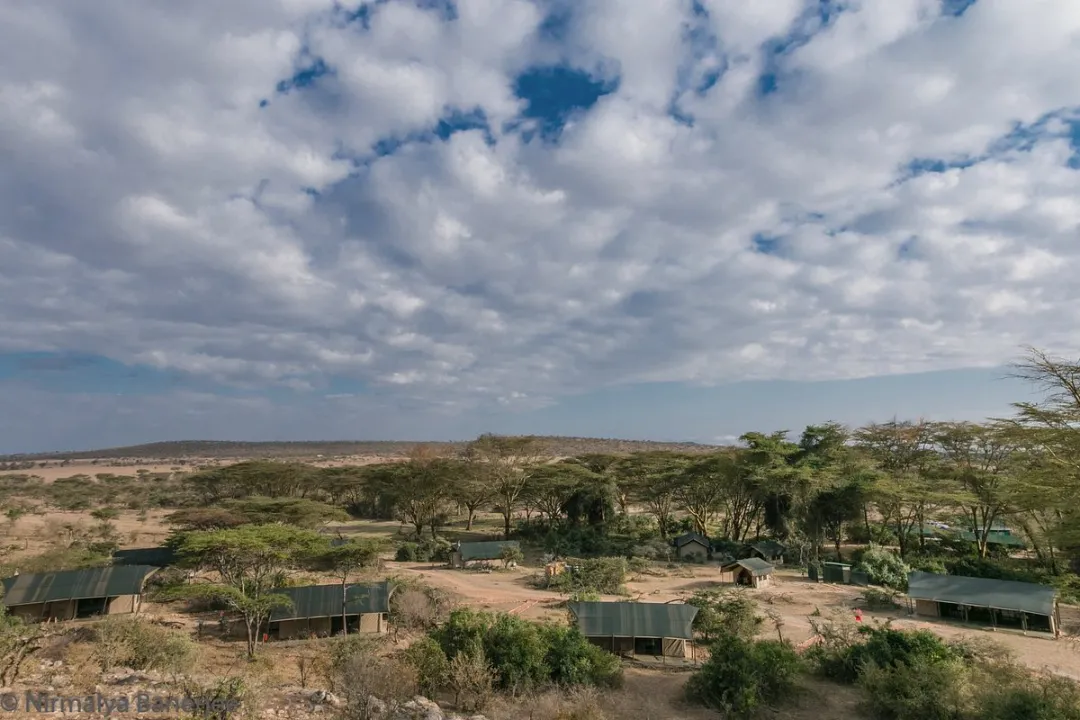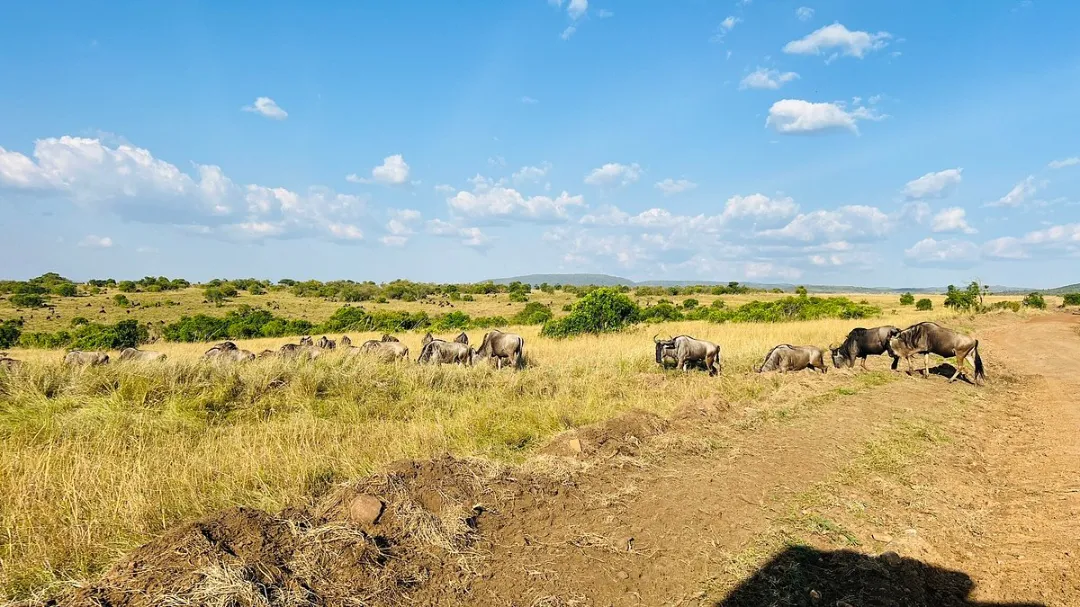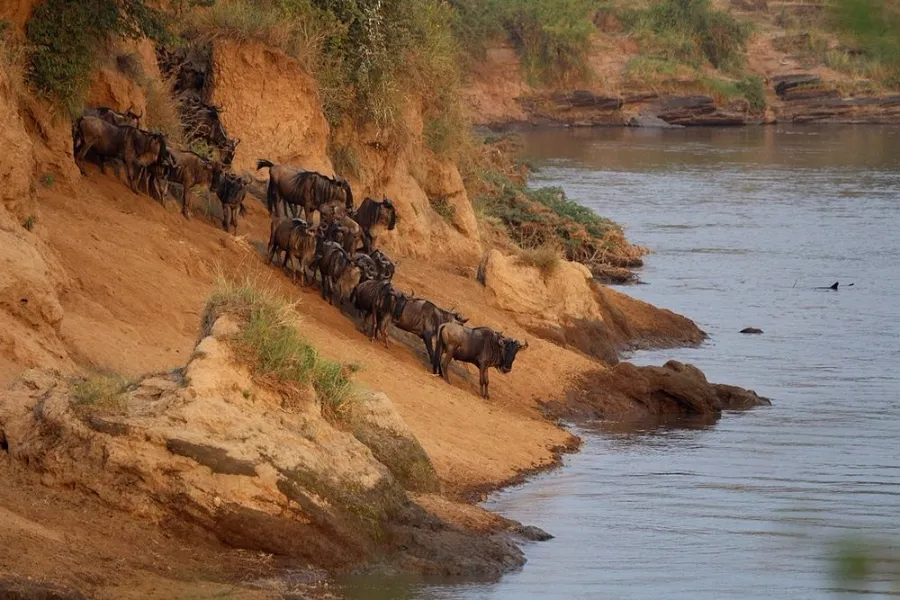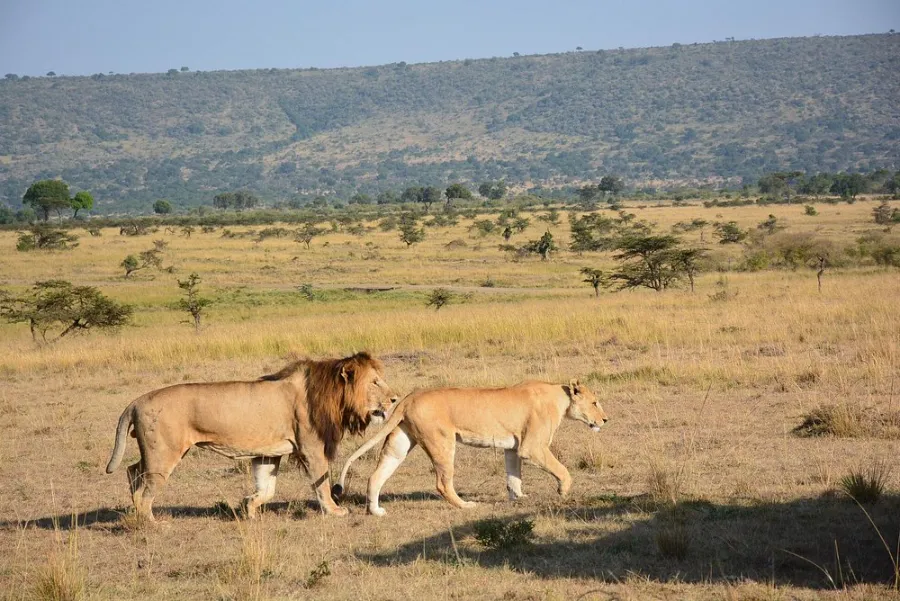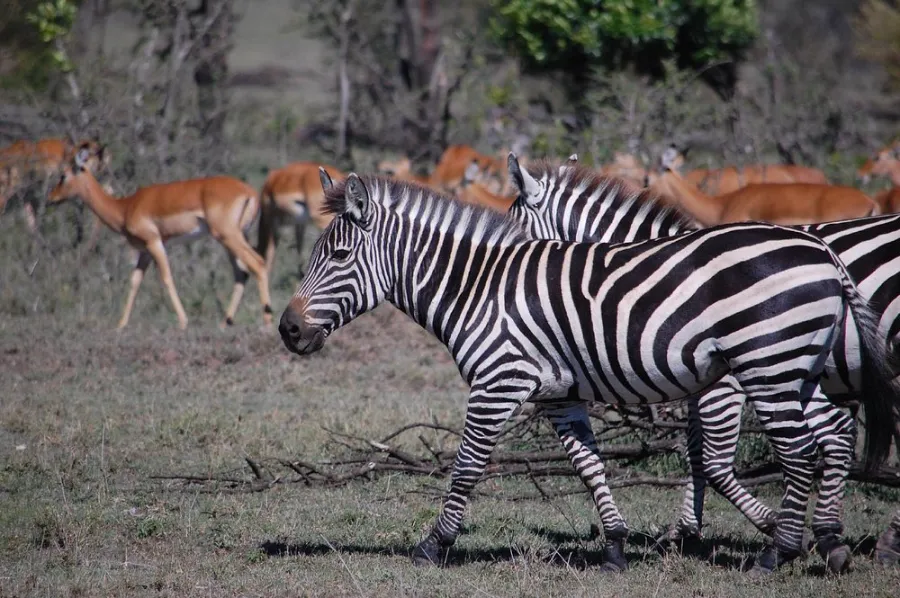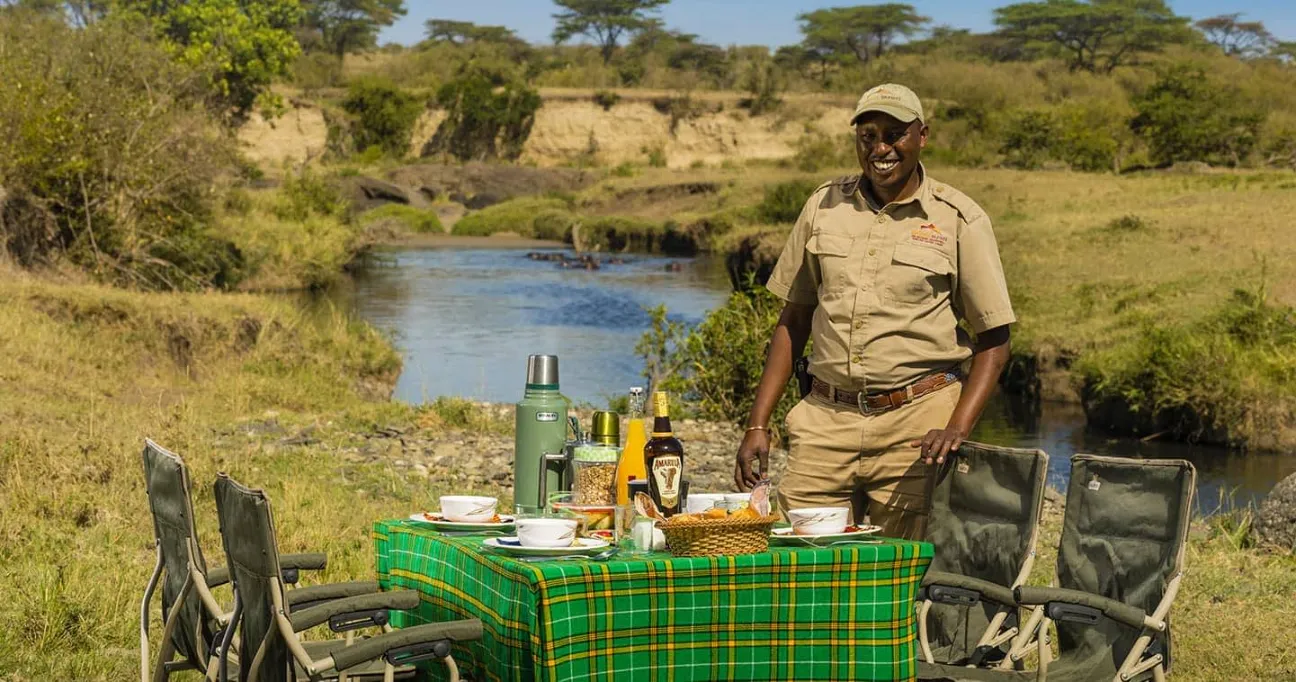Top Masai Mara Information: Your Guide to Kenya's Premier Safari Reserve
Table of Contents
Situated in the heart of south-west Kenya, the Masai Mara National Reserve spans an impressive 1,510 square kilometers and shares its border with Tanzania’s renowned Serengeti National Park, forming part of the greater Mara-Serengeti ecosystem. This vast expanse of savannah, dotted with iconic acacia trees, is a haven for wildlife and a paradise for nature enthusiasts. The name ‘Masai Mara’ honors the indigenous Maasai tribe, with ‘Mara’ meaning ‘spotted,’ referring to the landscape’s scattered trees and bushy terrain. Visitors to the Masai Mara can expect diverse landscapes, from savannahs to riverine forests, and a chance to see the Big Five along with many other species.
More than just another game reserve, the Masai Mara is a celebrated icon in wildlife conservation and tourism within East Africa. Recognized as one of the New Seven Wonders of the World, it attracts visitors from every corner of the globe, eager to witness its unparalleled beauty and biodiversity. From the vast herds of wildebeest and zebras to the powerful predators that follow them, the Masai Mara is bursting with life and excitement. It’s no wonder that this reserve is often hailed as Africa’s greatest wildlife reserve.
Hot air balloon rides over the savannah are among the unique experiences that make the Masai Mara famous. As you drift silently above the landscape at dawn, you’ll get a bird’s-eye view of the stunning scenery and the wildlife that roams below. This serene yet exhilarating adventure offers a unique perspective, highlighting the vastness and beauty of the Maasai Mara Game Reserve, including the renowned Mara Triangle.
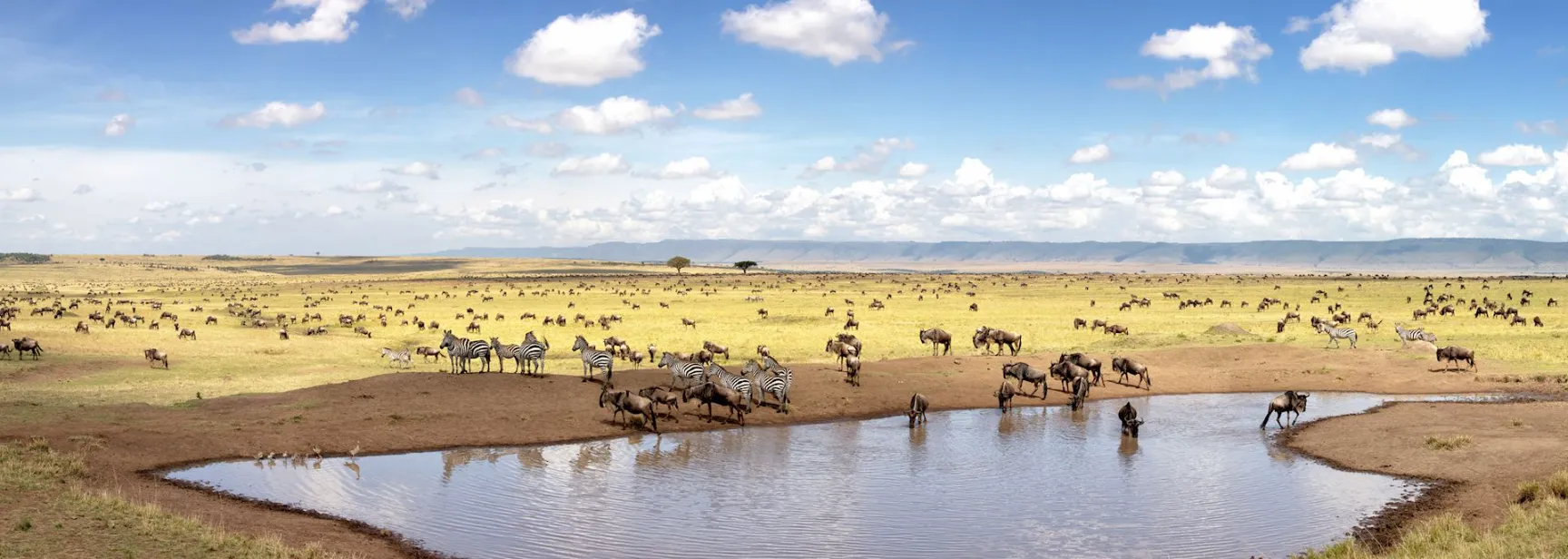
Wildlife of the Maasai Mara National Reserve
For wildlife enthusiasts, the greater masai mara area is a dream destination, home to over 40% of Africa’s larger mammals and offering premier opportunities to witness iconic African wildlife. The reserve is perhaps best known for the Big Five—lions, elephants, leopards, Cape buffalo, and rhinos. Remarkably, the Masai Mara boasts one of the highest densities of lions in the world, with an estimated population of 800 to 900 individuals. These majestic predators are a frequent sight, often seen lounging in the shade or stalking prey across the plains.
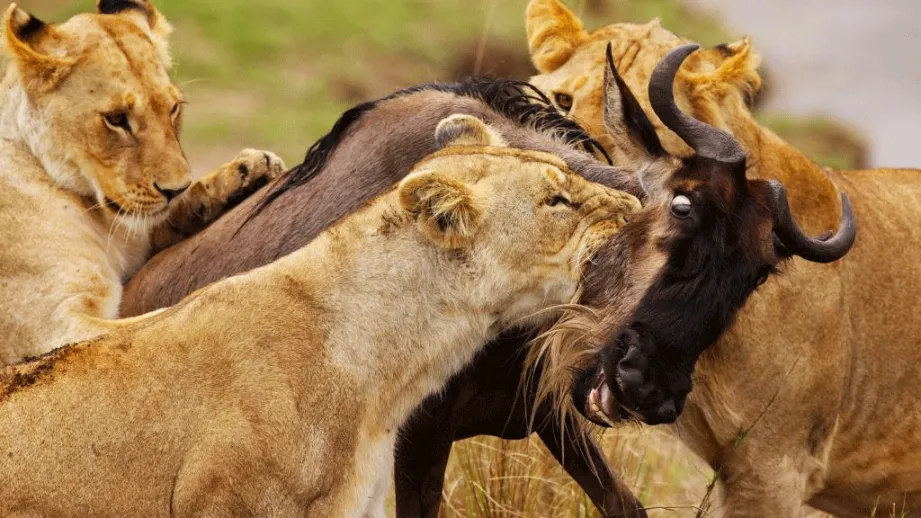
In addition to the Big Five, the Masai Mara is teeming with other wild animals. Herds of Cape buffalo roam the savannah, while solitary black rhinos can sometimes be spotted in their natural habitat. The majestic elephants, some weighing up to six tons, are a sight to behold as they move gracefully through the landscape. Leopards, though elusive, are often found in the wooded areas of the reserve, their stealthy movements making them a thrilling find for any safari-goer.
Masai Mara Highlights: The Great Wildebeest Migration
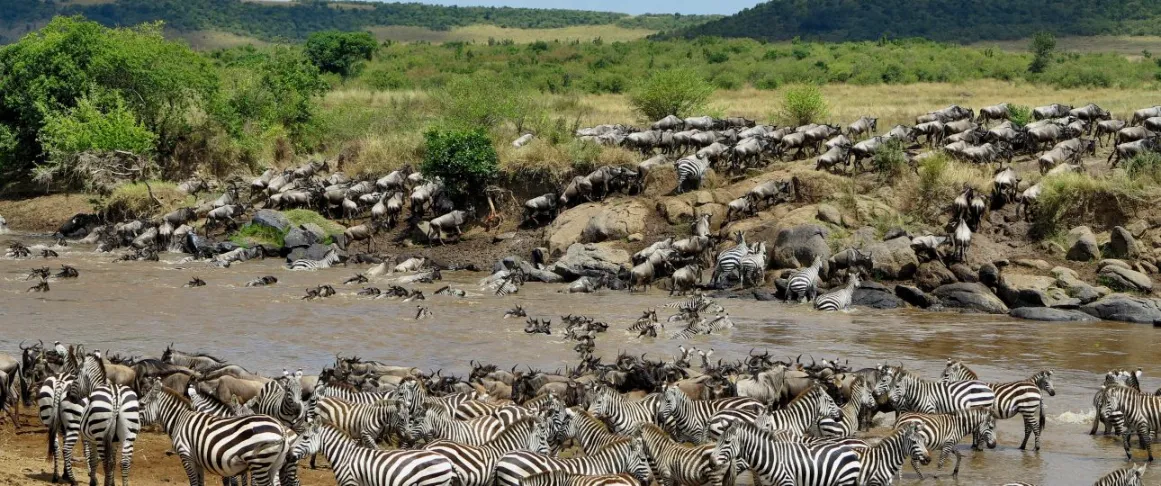
The Great Wildebeest Migration is one of the most spectacular events in the animal kingdom, captivating audiences worldwide. Annually, over 1.5 million wildebeest, along with hundreds of thousands of zebras and Thomson’s gazelles, migrate from the Serengeti in Tanzania to the lush grasslands of the Masai Mara. Driven by the search for greener pastures and guided by the rains, this migration is a testament to the resilience and instinct of these animals.
This migration typically occurs from July to October, with prime viewing times between mid-July and late August. During this period, the wildebeest face numerous challenges as they traverse the Mara River, a treacherous crossing fraught with danger. As the herds plunge into the river, they must contend with powerful currents, lurking crocodiles, and territorial hippos. Despite these perils, the sight of thousands of wildebeest braving the river in unison is a breathtaking spectacle that leaves a lasting impression.
Observing the Great Migration is a highlight of any Masai Mara safari. The sheer scale of the migration, combined with the dramatic predator-prey interactions, offers an unparalleled wildlife viewing experience. Whether you’re observing from a safari vehicle, perched on a riverbank, or soaring above in a hot air balloon, the Great Migration is a testament to the raw and unfiltered beauty of nature.
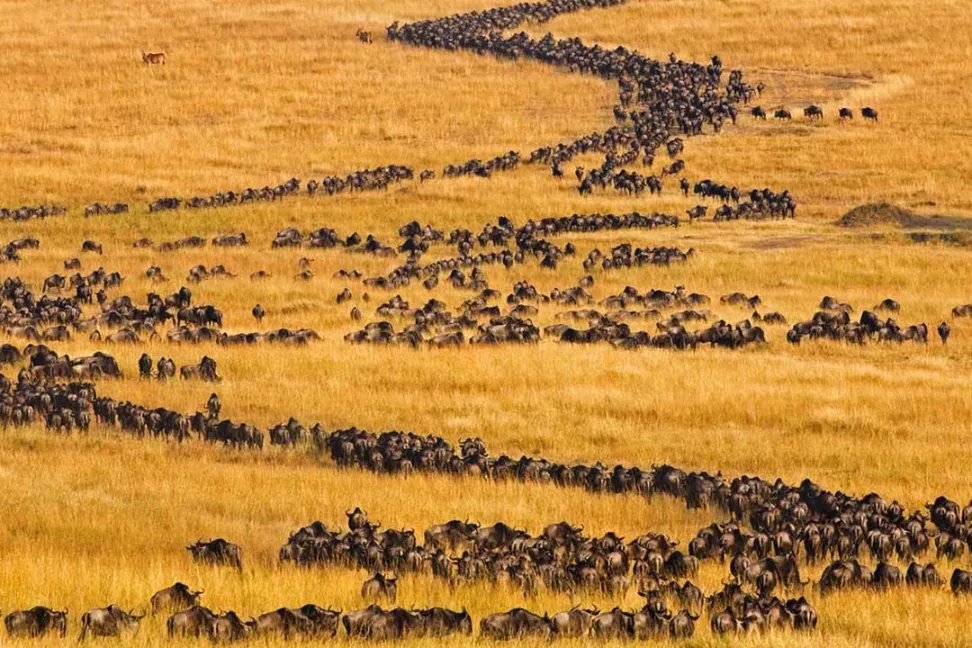
Safari Activities: Things to do in the Masai Mara National Reserve
Experiencing a hot air balloon safari over the sweeping plains of the Masai Mara Kenya is undoubtedly one of the most exhilarating activities you can undertake. As the sun rises over the savannah, the balloon drifts silently above the endless plains, offering a breathtaking aerial view of the abundant wildlife below. This serene adventure provides a unique perspective of the annual wildebeest migration, where thousands of wildebeest and zebras traverse the plains in search of greener pastures. The sight of these large herds moving in unison, coupled with the stunning vistas of the Mara North Conservancy, makes this an unforgettable experience.
Beyond the skies, walking safaris offer a more intimate connection with the Masai Mara’s diverse ecosystem. Accompanied by knowledgeable guides, you can explore the reserve on foot, delving into the details of the flora and fauna that make up this vibrant habitat. Nature walks allow you to appreciate the smaller aspects of the wilderness, from colorful birds to fascinating insects. Additionally, cultural visits to Maasai villages provide a glimpse into the rich Maasai culture and traditions, offering insights into their way of life and their role in conserving this natural wonder. Engaging with the Maasai people during these visits enriches your understanding of the harmonious relationship between the community and the wildlife of the Masai Mara.
Community Conservancies
The conservancies surrounding the Masai Mara play a pivotal role in conservation and community support, particularly for the Masai people. These areas, often referred to as Maasai pastoral ranches or group ranches, are privately owned by Maasai families who lease the land to safari lodges. This creates a sustainable model that benefits both wildlife and local communities. The Maasai Mara Wildlife Conservancies Association coordinates the management and governance of these conservancies, ensuring they operate effectively and support conservation efforts.
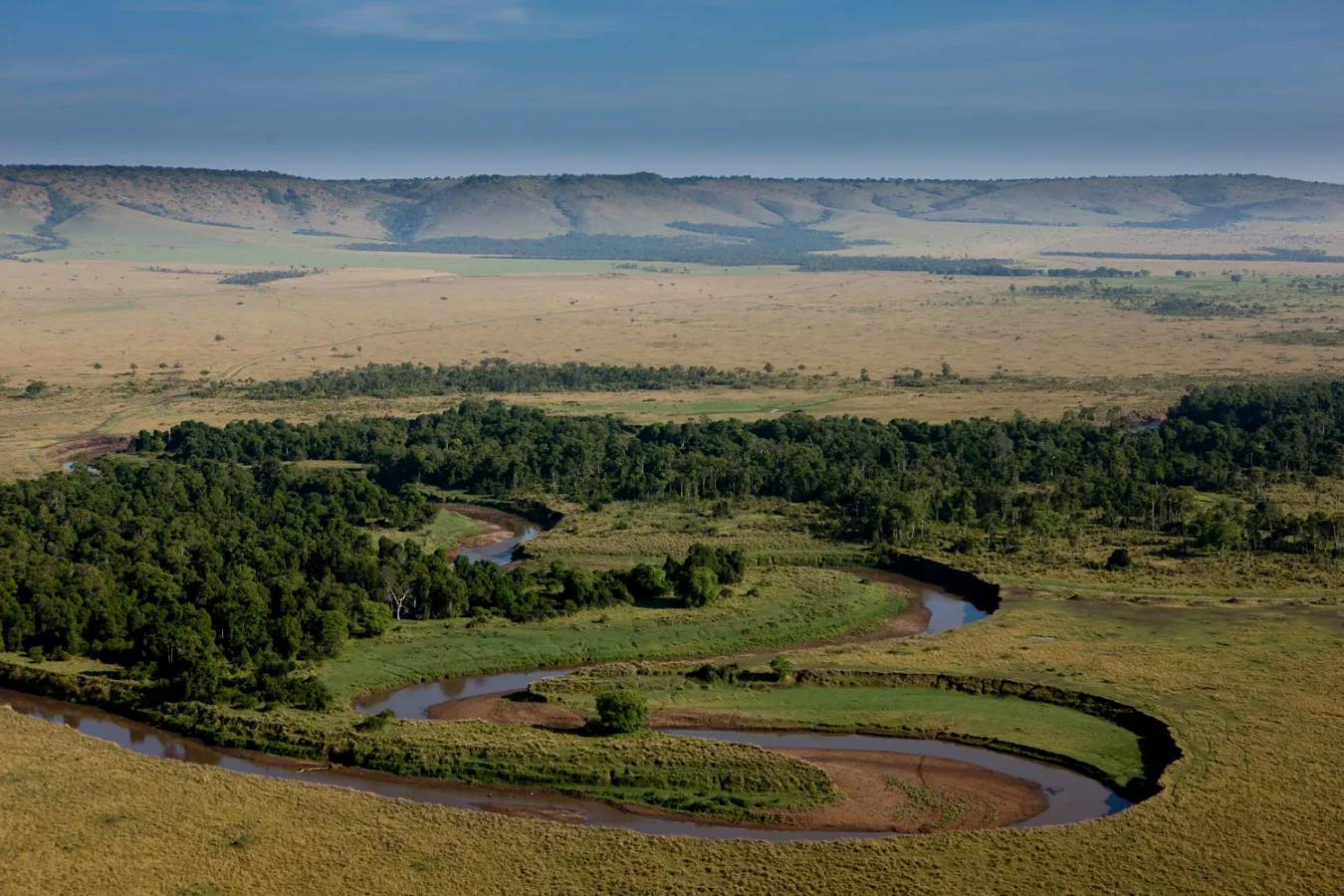
Income from these conservancies, through lease payments and tourism activities such as cultural visits to Maasai villages, provides financial support to local Maasai residents. This income helps improve the quality of life for the Maasai people, funding education, healthcare, and other community projects. Additionally, the conservancies help preserve the cultural heritage of the Maasai, allowing them to continue their traditional way of life as ancestral inhabitants while benefiting from modern economic opportunities.
Maasai Mara Conservation Initiatives
The Masai Mara conservation initiatives focus on preserving its unique wildlife sanctuary and maintaining its national reserve status. Efforts are directed towards protecting the diverse ecosystems, including the pristine riverine forests that are home to a variety of species. Private conservancies play a vital role in these initiatives, working alongside the local community to promote sustainable tourism and wildlife conservation. These conservancies not only provide additional protected areas for wildlife but also support the local economy, ensuring a harmonious balance between conservation and community development.
Top Safari Camps and Lodges
For a luxurious and immersive safari experience, the Masai Mara offers some of Africa’s finest safari camps and lodges. One such option is the Kichwa Tembo Tented Camp, located on the lush banks of the Saparingo River. This camp offers a blend of Maasai-inspired luxury and Kenyan hospitality, with rates starting from $785 per person per night. Guests can enjoy stunning views, comfortable accommodations, and exceptional wildlife viewing opportunities.
Another top choice is Cottar’s 1920s Safari Camp, which features vintage luxury with 1920s-themed cream tents and professional Maasai safari guides. Prices at Cottar’s begin at $1,144 per person per night, offering a truly unique and nostalgic safari experience.
For those who prefer a more remote setting, the Elewana Sand River Camp is an excellent option. Located in a secluded area of the Masai Mara, this camp recalls the romantic style of 1920s safaris, with accommodation starting from $827 per person per night.
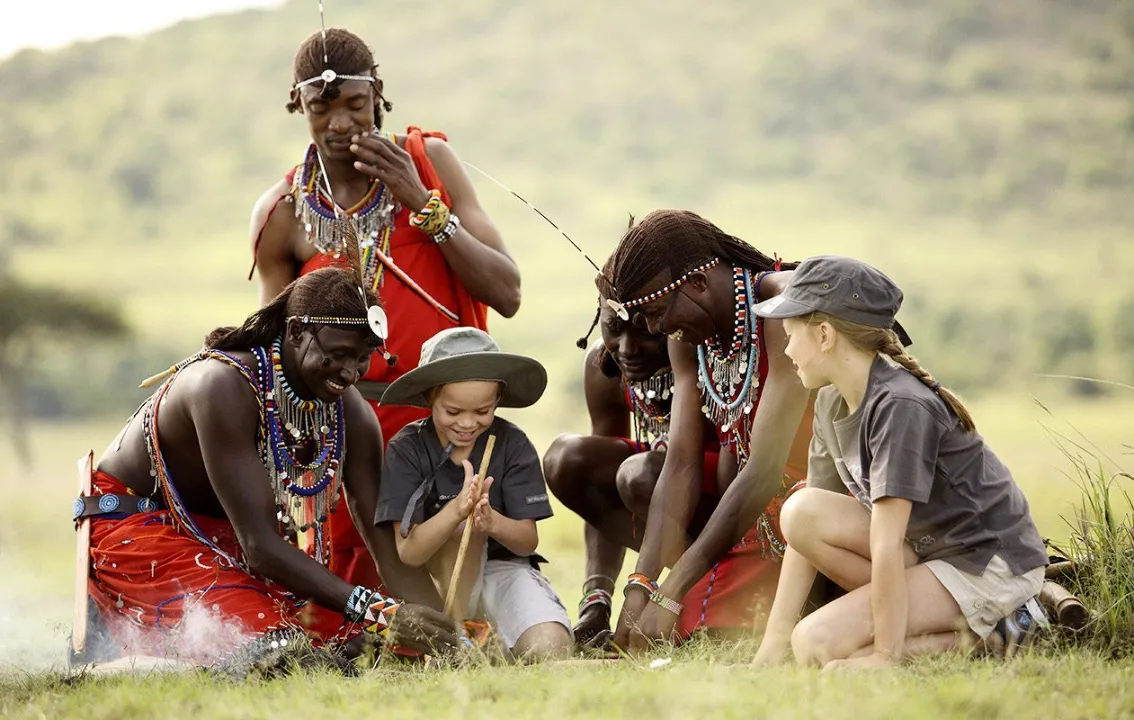
Mara Plains Camp is another exquisite choice, offering a blend of luxury and adventure in the heart of the African savannah. Known for its intimate setting and personalized service, this camp provides an unforgettable safari experience.
Mara Engai Wilderness Lodge, perched on the Oloololo Escarpment, offers breathtaking views of the Masai Mara. This lodge combines luxury with eco-friendly practices, ensuring a comfortable stay while minimizing environmental impact.
Other notable mentions include Mahali Mzuri, which offers exclusive glamping experiences in the Olare Motorogi Conservancy, and Richard’s River Camp, known for its exclusivity along the Ntiakatek River. Angama Mara is another exceptional choice, offering breathtaking views from its perch on the Oloololo Escarpment, with luxurious accommodations and unparalleled game viewing opportunities.
Best Time to Visit Masai Mara
The Masai Mara is a year-round safari destination, but the best period to visit is during the Dry season, from June to October. During this time, animals congregate near rivers and waterholes, making them easier to spot. The peak time to witness the wildebeest migration is from mid-July to late August, with September and October offering excellent opportunities to see the herds after they have crossed into the Masai Mara.
For bird watchers, the Masai Mara is a paradise, home to over 500 bird species. Bird watching peaks between November and April, when migratory species join the resident birds, creating a vibrant and diverse avian community.
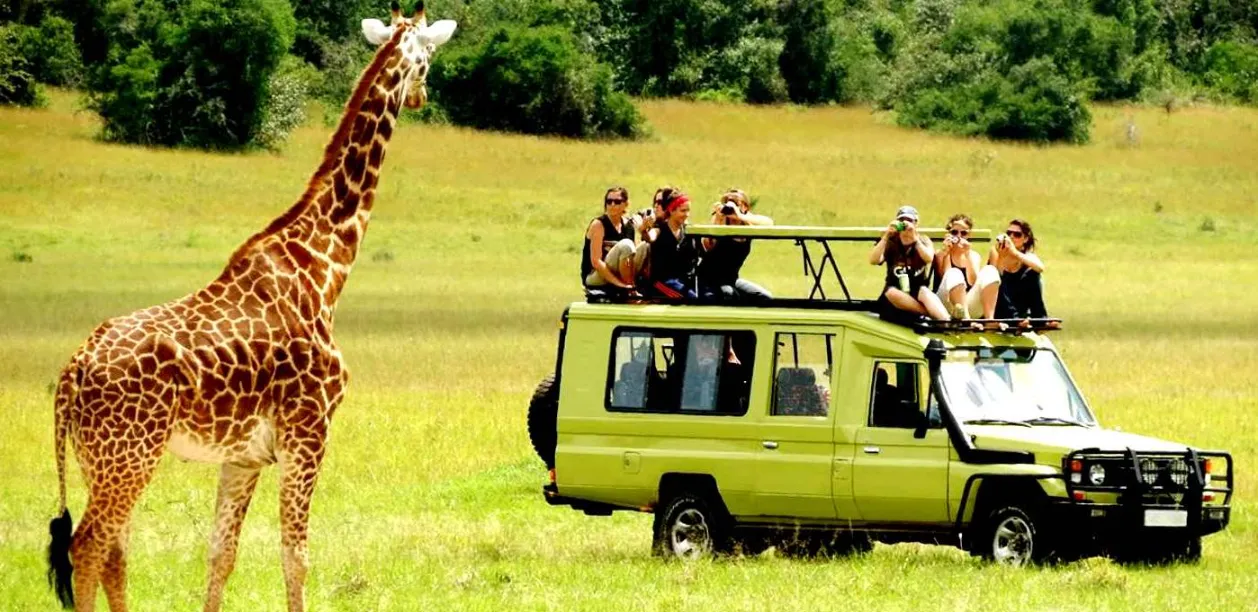
From Nairobi, visitors can opt for a quick and scenic flight directly to the Masai Mara, with flight durations ranging from 30 to 45 minutes. These flights offer stunning aerial views of the Kenyan landscape and conveniently land at one of the many airstrips surrounding the reserve.
For those who prefer a road trip, the journey from Nairobi to the Masai Mara takes approximately 6 to 7 hours, covering around 306 kilometers. The drive offers a chance to see more of Kenya’s beautiful countryside, but it’s worth noting that the route from Narok to the Masai Mara can be quite bumpy and requires around three hours to complete.
You Might Love The following:
Information About Masai Mara and Conservancy:
Welcome to AjKenya Safaris
Thanks for stopping by! We’re excited to help you plan an unforgettable safari.
- Phone: +254 748 258880
- WhatsApp: +254 748 258880
- Email: [email protected]
- Email: [email protected]

